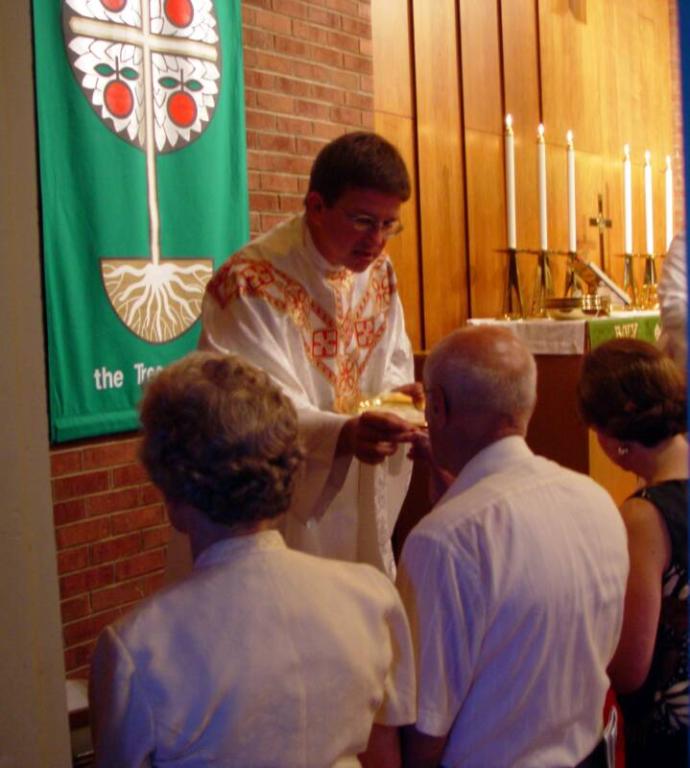“‘Confessional’ churches receive more converts than ‘Missional’ churches, and ‘Traditional’ churches receive more converts than ‘Contemporary’ services.”
This is only one of the counter-intuitive or counter-conventional wisdom findings of the 2023 Lutheran Religious Life Survey. Demographer Lyman Stone, himself an LCMS convert whose work for the Institute for Family Studies and other think tanks has given him a high profile, has been collecting data on the Lutheran Church Missouri Synod since 2021.
There has been a controversy in the LCMS over the last few decades between Lutherans who call themselves “confessional,” emphasizing traditional Lutheran theology and liturgical worship, and those who call themselves “missional,” emphasizing church growth methodology and contemporary worship as ways of fulfilling the priority of evangelism. (To be fair, the “missionals” insist that they too hold to the Lutheran confessions, and the “confessionals” insist that they too are committed to the mission of evangelism. They differ, though, in how these concerns manifest themselves.)
Stone’s data overturns the prevailing assumptions, giving support to the confessional side of the debates, and including some good news overall for the Lutheran Church Missouri Synod. Here are some of the report’s key findings, in bold, along with a few thoughts from me about each one:
–About 3% of LCMS members are converts from outside of Christianity, 8% from other non-Lutheran Christian backgrounds, and 20% from other Lutheran or similar denominations.
That means that a total of 31% of LCMS members–almost one third–come from the outside and are not “cradle Lutherans.” That’s much more than I thought. It would be good to increase that 3% number.
–“Confessional” churches receive more converts than “Missional” churches, and “Traditional” churches receive more converts than “Contemporary” services. Smaller LCMS churches in rural areas or small towns receive higher rates of converts than large urban or suburban congregations.
This completely turns upside down the assumptions of the church growth movement. Contemporary worship is not more effective than liturgical worship in reaching outsiders; rather, the reverse is true. Megachurches are not more effective than small congregations in the mission of evangelism; rather, the reverse is true.
–Exposure to LCMS primary and secondary schooling is a major factor shaping conversion: many people become LCMS due to their experiences in LCMS schools, and LCMS children enrolled in LCMS schools may have higher rates of remaining LCMS.
This is good to hear, both as a testimony to our schools and as evidence that the claim that our schools are important in outreach and evangelism holds up. As schools in the public sector continue to get worse, our Lutheran schools can be an even greater attraction to outsiders. They won’t be primarily interested in their Christian content, of course, so we also need to make sure that our school’s academic offerings are superior. That’s what will attract the unchurched, whereupon their children and they themselves can be exposed to the Gospel. Extremely strong academics coupled with extremely strong Christian instruction and Lutheran catechesis are hallmarks of the rapidly-growing Lutheran Classical Schools.
–More liturgical churches, and churches that respondents identify as “Confessional and Traditional,” not only receive more converts, but are experiencing less severe declines in attendance and membership, and may have younger membership profiles.
Again, a flat out contradiction of what we have been told in church growth presentations. If we want to be a “growing church” and attract younger people, we need to emphasize the Lutheran confessions and worship according to the traditional Lutheran liturgy.
Young LCMS members have uniquely intense views prioritizing the visible means of grace as key factors in salvation, whereas older LCMS members are somewhat less likely to emphasize the visible means of grace.
This is of extreme interest to me. It’s worth a separate post, so tune in Friday. Tomorrow I want to dive into some of the details disclosed in the study about converts, as well as what it found about racial attitudes.
Photo: Celebration of the Holy Eucharist in a Parish of the Lutheran Church Missouri Synod by self – self, CC BY-SA 3.0, https://en.wikipedia.org/w/index.php?curid=23206501














